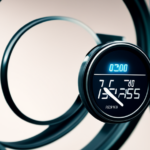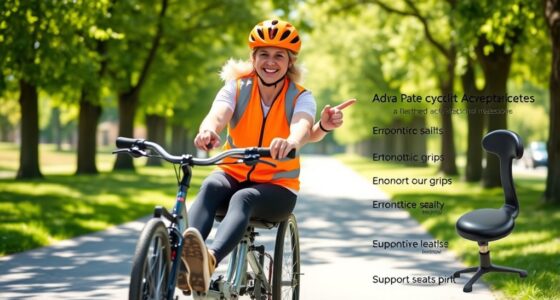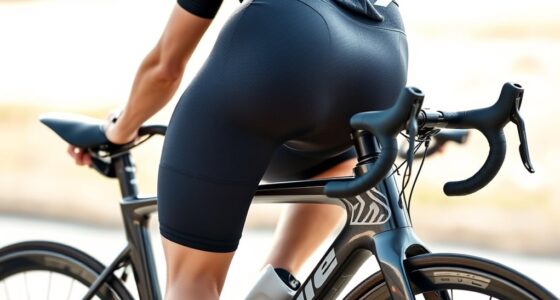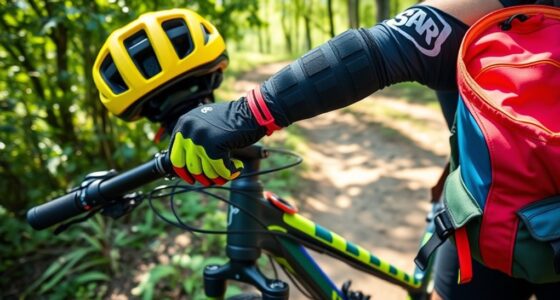When building a DIY e-bike, you need to understand the regional rules, including power and speed limits, and get the right certifications like EN 15194 if required. Make sure your bike has clear, durable labels showing motor size and compliance marks. Always monitor and adjust your controller settings to stay within legal limits, and keep detailed records. Staying aware of evolving laws helps you keep your bike legal—continue to explore how to stay compliant and safe.
Key Takeaways
- Understand regional regulations, including power and speed limits, to ensure your DIY e-bike remains legal.
- Use certified components and proper labeling (manufacturer info, max speed, power) for compliance verification.
- Regularly monitor and adjust controller settings to keep wattage at or below 250W and speed within legal limits.
- Document component specifications, test results, and certifications to support self-certification and legal inspections.
- Stay informed about evolving legislation and adopt smart, standardized systems for future-proof compliance.
Understanding Local Regulations and Legal Definitions
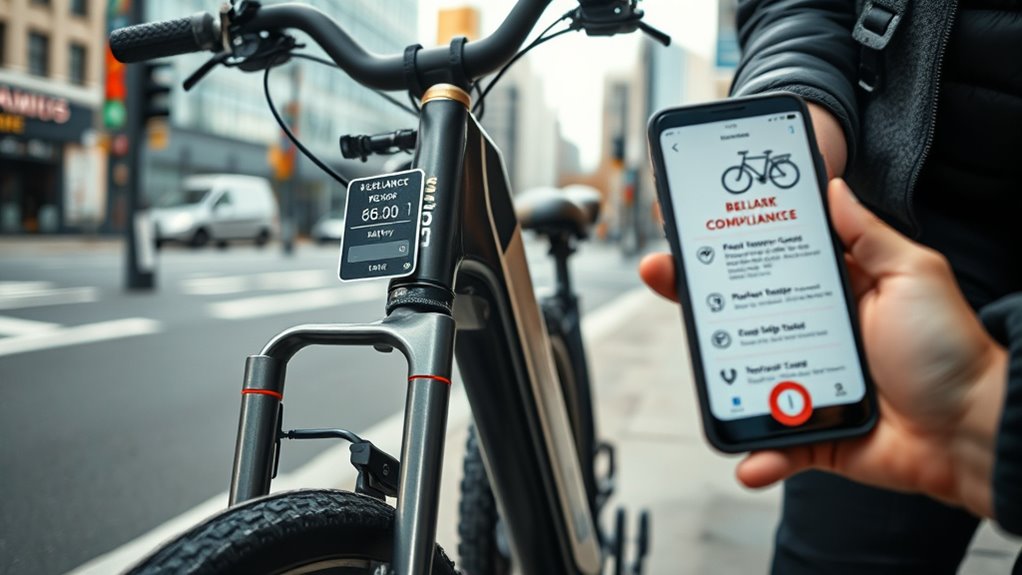
Understanding local regulations and legal definitions is essential when building or modifying a DIY e-bike. Different regions have varying rules for electric bikes, affecting how you must approach compliance. In the UK, DIY e-bikes are legal if they meet specific standards—max 250W power and 15.5 mph assist speed. Exceeding these limits makes them illegal. In the U.S., states categorize e-bikes into classes based on speed and assistance, influencing your build’s legality. Many areas also require certification and proper labeling to prove compliance, especially for homemade or kit-built e-bikes. Ignoring these regulations can lead to penalties, liability issues, or confiscation. Knowing the legal standards in your region helps you avoid trouble and ensures your DIY e-bike is safe, lawful, and roadworthy. Proper formulation standards are crucial to ensure your e-bike is compliant and safe to ride. Additionally, understanding local regulations can help you navigate potential legal challenges and stay within the law. Staying informed about regulatory updates can prevent inadvertent violations and keep your project on the right side of the law. Being aware of cybersecurity concerns related to e-bike technology can also protect your device from potential vulnerabilities. Incorporating safety features in your build is also important to meet legal requirements and ensure rider protection.
Power and Speed Limits for DIY E‑Bikes
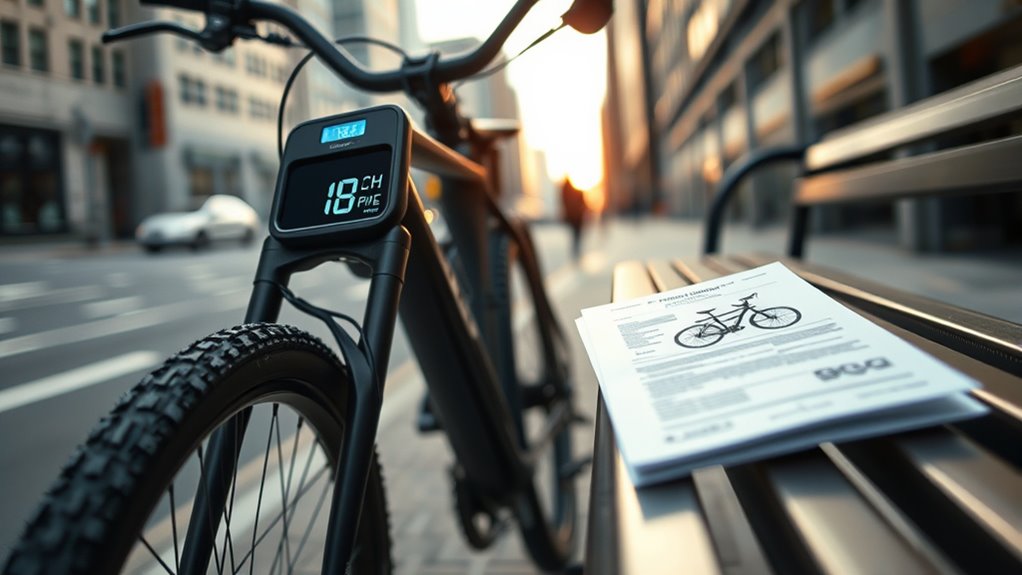
To stay within the law when building or modifying a DIY e-bike, you need to pay close attention to power and speed limits. In the UK, a legal e-bike must have a maximum power of 250W and assist only up to 15.5 mph. Exceeding these limits can make your bike illegal, potentially requiring registration and licensing. Many DIY kits feature adjustable controllers, which can inadvertently push your bike beyond legal boundaries if not properly set. Proper labeling of motor power and maximum assist speed, following EN 15194 standards, is *essential* for legal compliance. Running a DIY e-bike over the legal power or speed limits risks enforcement action and classifies your bike as a motor vehicle.
Certification and Compliance Standards to Consider
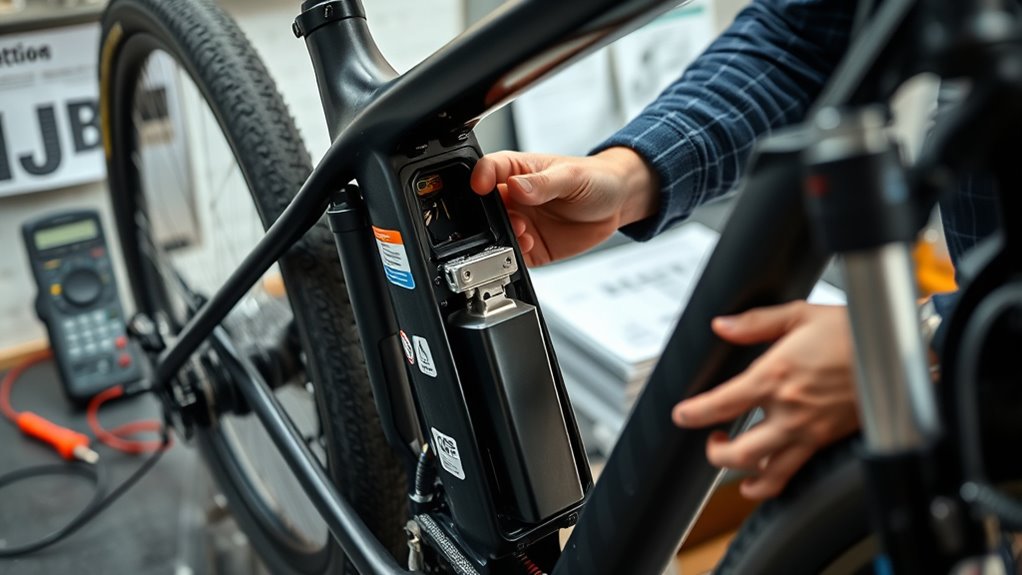
Ensuring your DIY e-bike meets certification and compliance standards is vital to legal operation. Certification standards like EN 15194 set the benchmarks for European safety, noise, and performance requirements. You must verify that your components pass these tests, especially if you’re using compliant kits. Proper motor power labeling, such as 250W, and maximum speed markings, like 15.5 mph, are essential for demonstrating compliance and avoiding legal issues. Incorporate clear, durable markings with manufacturer details, power output, and assist speed limits on your build. Staying within these standards ensures your e-bike aligns with legal regulations and helps prevent penalties. Remember, compliance involves adhering to all component limits, making certification standards an indispensable part of your DIY e-bike project. Additionally, understanding water safety and proper handling can prevent accidents related to water exposure, especially if you plan to use your e-bike in wet conditions or near water bodies. Proper maintenance practices are also crucial to keep your e-bike safe and compliant over time. Being aware of potential regulatory changes can help you stay updated with evolving standards and avoid inadvertent violations. Regularly consulting official guidelines and staying informed about updates ensures ongoing compliance and safe riding.
Proper Labeling and Self-Certification Practices
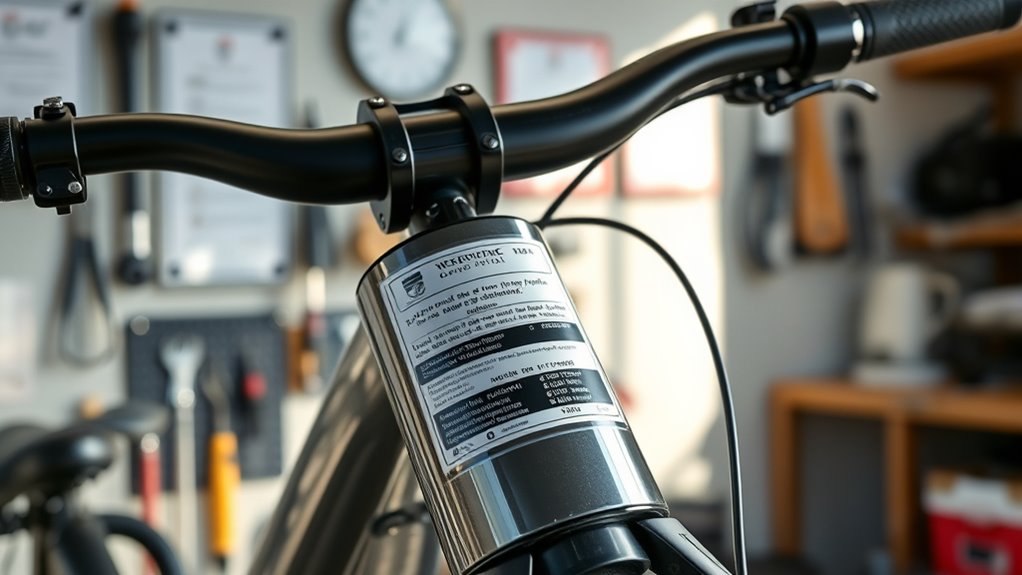
To stay within legal limits, you need to clearly label your DIY e-bike with accurate power and speed information. Proper self-certification involves affixing durable markings that verify your bike’s compliance and keeping detailed records of components and testing results. Ensuring these labels are visible and weather-resistant helps authorities quickly verify your bike’s legality and avoid potential penalties. Additionally, understanding the types and varieties of electric motors used in e-bikes can help ensure your build meets the required specifications. Knowing the core personality traits that influence behavior can also inform your approach to adhering to safety and legal standards during your build. Incorporating insights from security zone info can further enhance your awareness of safety measures applicable during your project. Moreover, implementing AI security technologies can assist in monitoring and maintaining compliance with evolving regulations and standards. Paying attention to emergency preparedness essentials can help you respond effectively if legal issues or safety concerns arise during your build process.
Accurate Power Labeling
Proper labeling of your DIY e-bike is essential for legal compliance and easy verification by authorities. Accurate power labeling ensures your bike clearly states its motor power, such as up to 250W, and maximum speed, like 15.5 mph. This information helps confirm that your DIY e-bike meets legal standards and aligns with certification requirements. Even if external certification isn’t mandatory, self-certification involves affirming your bike’s compliance and marking it with durable, visible labels. Using standardized markings, such as those aligned with EN 15194 guidelines, demonstrates adherence to power and speed limits. Proper power labeling reduces legal risks by providing clear, verifiable evidence that your DIY e-bike complies with relevant regulations, making inspections smoother and ensuring you stay within the law. Additionally, practicing mindfulness and self-awareness during the assembly process can help you stay attentive to detail and ensure accurate labeling. Being aware of cookie consent requirements and privacy considerations can also help you understand how your information is used and ensure your labeling practices remain compliant. Incorporating automated security protocols can further protect your data and reduce potential vulnerabilities in your labeling and documentation systems. Regularly reviewing product standards can help you stay updated with current legal requirements and certification practices over time. Paying attention to website performance metrics can help you monitor and improve your compliance process over time.
Speed Limiter Indicators
Accurately labeling your DIY e-bike’s speed limiter is essential for legal compliance and easy verification by authorities. Proper labeling ensures your bike clearly displays compliance with legal standards. Here are key points to contemplate:
- Include the maximum speed (e.g., 15.5 mph or 25 km/h) on the label.
- Clearly state the motor power (e.g., 250W) to demonstrate adherence.
- Use durable, visible labels that won’t easily fade or detach.
- Ensure labels are securely attached in accessible locations for inspections.
- Understanding Ethical Hacking can help you identify vulnerabilities in your DIY bike’s security systems, ensuring your modifications remain compliant and safe.
- Incorporating industry standards into your labeling practices can simplify legal verification and enhance safety.
Compliance Documentation Standards
Ensuring your DIY e-bike meets legal standards requires clear and all-encompassing documentation, especially through proper labeling and self-certification. You must include compliance documentation that shows your motor and controller meet EN 15194 standards, which specify maximum power and speed limits. Proper labeling should display the manufacturer’s name, max speed, and motor power—making it easy for authorities to verify legality. Labels need to be durable, visible, and securely attached to the frame to remain legible during inspections. Self-certification involves accurately marking your bike with component details and adhering to legal limits, even without external certification. Use this visualization to guide your labeling process:
| Label Element | Description | Purpose |
|---|---|---|
| Manufacturer Name | Your name or brand | Identity verification |
| Max Speed | e.g., 15.5 mph | Legal compliance |
| Motor Power | e.g., 250W | Certification standards |
| Certification Mark | EN 15194 | Compliance proof |
Risks of Non-Compliance and Legal Penalties
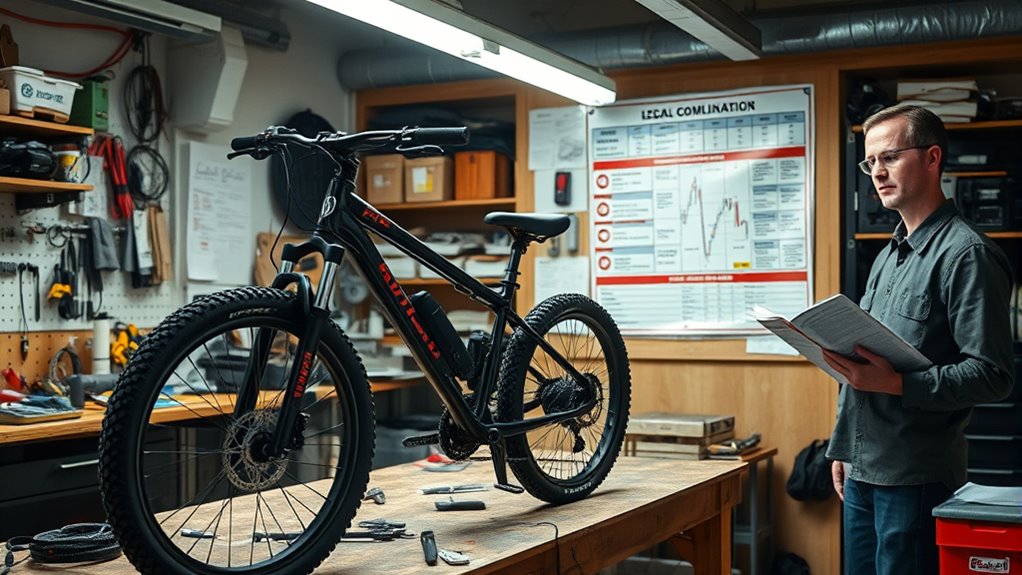
If you ignore legal limits on power and speed, you risk facing fines, confiscation, and other penalties. Non-compliance with regulations can have serious consequences for your DIY e-bike. Here’s what you might encounter:
- Getting fined or having your e-bike confiscated if it exceeds the legal power output or speed limits.
- Facing legal penalties, such as points on your license or even criminal charges, if your e-bike isn’t registered or compliant.
- Insurance denials that leave you liable in case of accidents.
- Increased liability if you modify your DIY e-bike beyond legal thresholds, risking penalties and safety issues.
Staying within legal limits isn’t just about following the law; it’s about avoiding costly penalties and ensuring your safety.
Strategies for Maintaining Legal Status During Modification
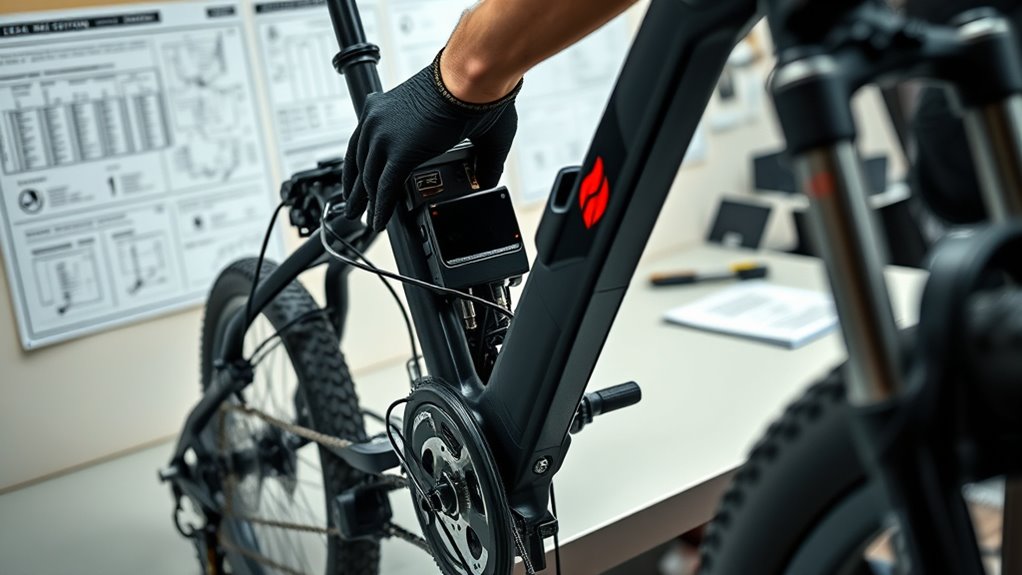
To stay within legal limits, you should use programmable controllers that let you set and switch between power profiles, keeping wattage under the legal threshold. Regularly test your bike’s power output through real-world dyno testing to guarantee compliance. Additionally, install speed limiters or controllers that restrict maximum assistance speed to meet local regulations.
Use Programmable Controllers Effectively
Programmable controllers are essential tools for keeping your e-bike legal while allowing modifications. They let you switch between power profiles, such as a legal 250W mode or higher-performance settings, ensuring compliance during different rides. By configuring your controller’s software, you can:
- Set and lock power output to stay within legal limits.
- Use cycle analyst displays or custom firmware to monitor wattage and speed in real-time.
- Program automatic cut-offs at 25 km/h (15.5 mph) to meet UK and EU speed restrictions.
- Regularly update and test your settings, especially after component changes or regional rides.
These steps help you maintain legal compliance, prevent unintentional violations, and enjoy your e-bike confidently within the law.
Monitor Power and Speed Limits
Monitoring your e-bike’s power and speed during modifications is crucial to stay within legal limits. You should regularly check your controller settings to ensure the power output doesn’t exceed 250W and the speed stays below the 15.5 mph speed limit. Using programmable controllers with adjustable profiles allows you to easily switch between settings tailored for compliance and performance. Installing speed limiters or software restrictions automatically cuts motor assistance once you hit the legal threshold. Regular real-world dyno testing helps verify that your bike maintains legal power levels during typical riding conditions. Keep detailed labels or documentation of your components and settings to demonstrate compliance if questioned by authorities. These strategies help you stay within regulations while enjoying your DIY e-bike safely and legally.
Future Trends in E‑Bike Legislation and Design
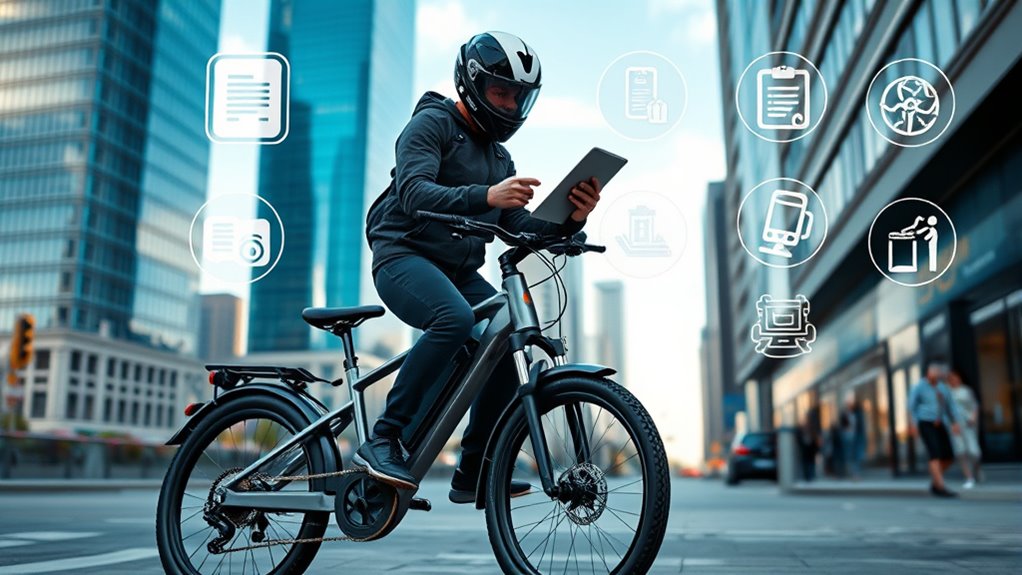
As e-bike technology advances, future legislation is expected to raise limits on power and speed to keep pace with innovations and rider expectations. You’ll likely see:
- Modular components that adapt easily to changing legal standards across regions, making DIY upgrades smoother.
- Smart systems that automatically adjust power or speed based on your location and profile, enhancing safety and compliance.
- Certification processes becoming standardized for DIY kits and modular parts, simplifying legal approval.
- New designs incorporating advanced safety features and noise reduction, aligning with stricter environmental and safety regulations.
These trends aim to support innovation while maintaining safety and legality. Staying informed about these developments ensures your DIY e-bike remains compliant and future-proof as regulations evolve.
Frequently Asked Questions
Does an Ebike Need to Be Registered on Federal Property?
You wonder if your e-bike needs registration on federal property. Generally, low-speed e-bikes that meet certain criteria, like being classified as bicycles, don’t require registration when used on federal lands where bicycles are allowed. However, if your e-bike exceeds power or speed limits, it might be considered a motorized vehicle, which could need registration. Always check specific federal agency rules before riding your e-bike on federal property.
How Do I Make My Ebike Street Legal?
Imagine your e-bike as a legal puzzle; fitting the pieces correctly keeps you safe. To make your e-bike street legal, verify the motor is no more than 250W, and assistance doesn’t exceed 15.5 mph. Label it with manufacturer details, use compliant components, and avoid removing speed limiters. Keep documentation handy. By following these steps, you turn your DIY bike into a lawful, reliable ride on public roads.
What Are the Laws Around Ebikes?
When asking about e-bike laws, you need to know your region’s specific regulations. In the UK, DIY e-bikes must have 250W power and assist up to 15.5 mph. In the US, class limits vary, with some allowing up to 28 mph. Europe typically caps assistance at 25 km/h. Exceeding these limits can classify your bike as a moped, requiring registration and licensing. Always check local laws before riding.
What Are Federal Laws on Ebikes?
When it comes to federal laws on e-bikes, you need to know the rules of the road before you get rolling. The U.S. classifies e-bikes into three categories based on speed and assist type, with safety standards set by the CPSC. If your e-bike fits these categories, you’re generally good to go without registration. Just remember, state and local laws can throw a wrench in the works, so stay informed.
Conclusion
Staying within legal bounds isn’t just a choice—it’s your shield against potential penalties. As laws evolve like a river, so must your awareness and modifications. Embrace compliance as your guiding star, ensuring your DIY e-bike remains a symbol of innovation rather than infringement. By understanding regulations now, you pave a smoother path ahead, turning your passion into a journey that’s both exhilarating and legally sound—because in this ride, knowledge is your most trusted gear.



